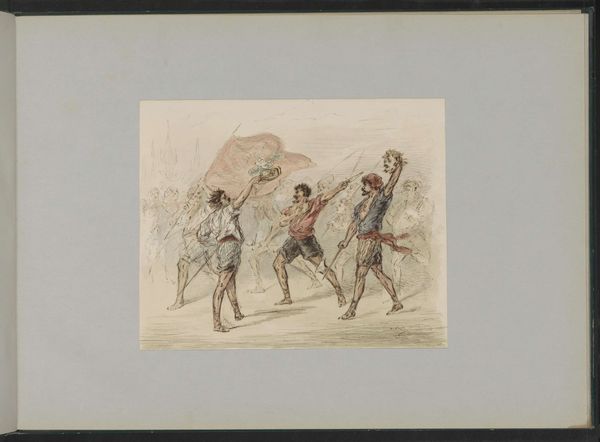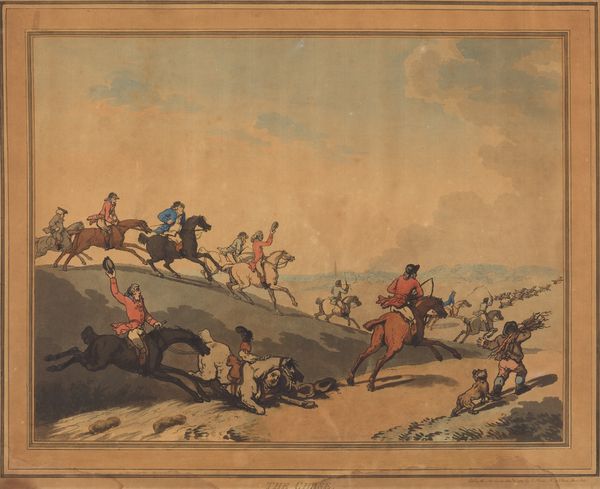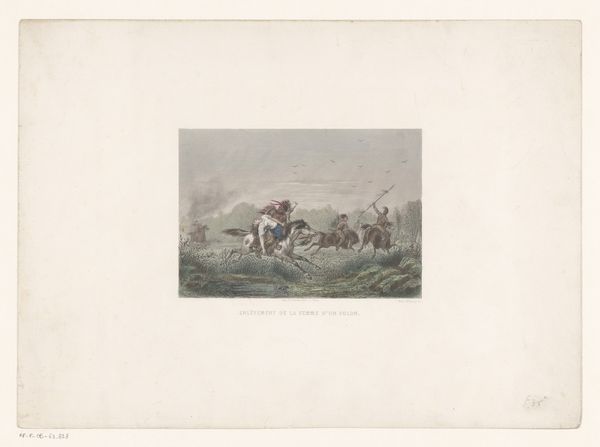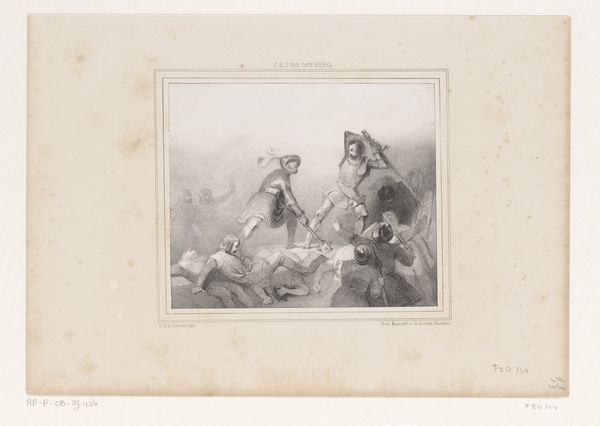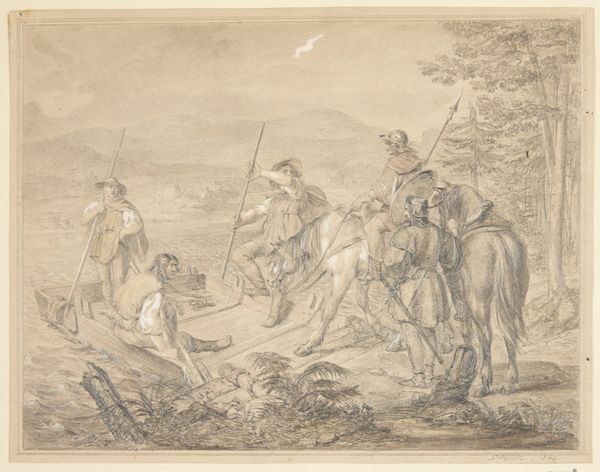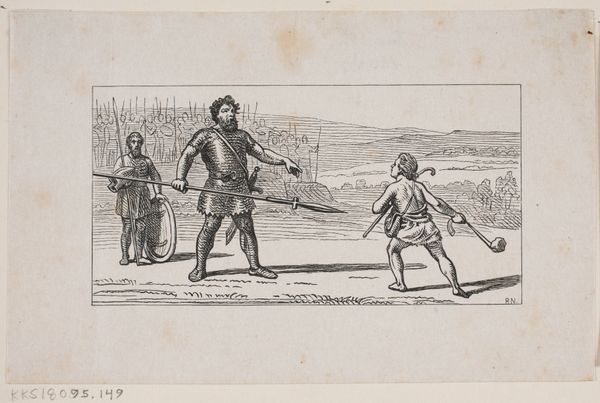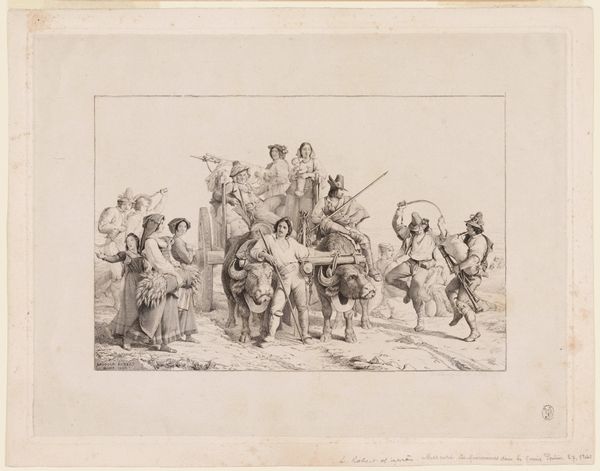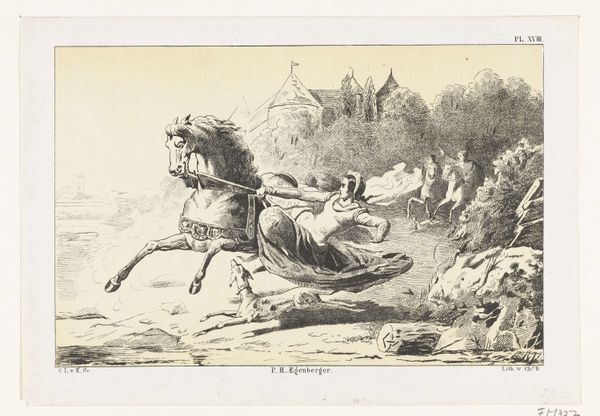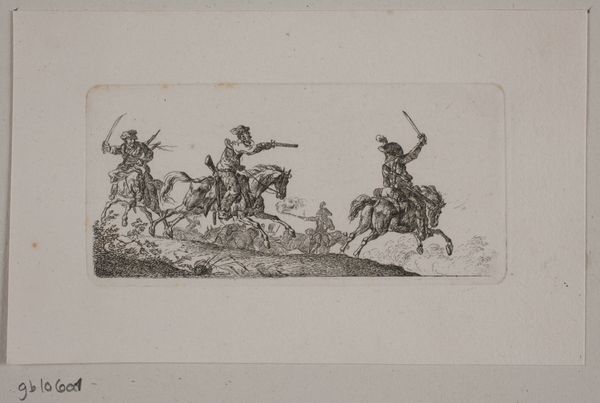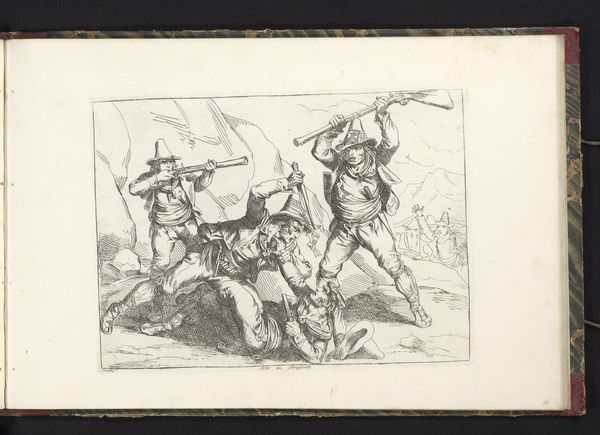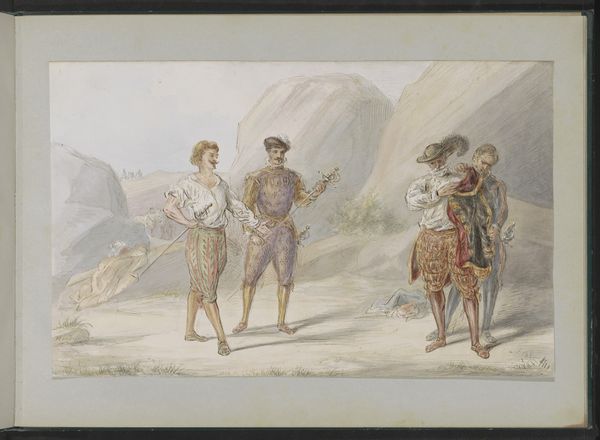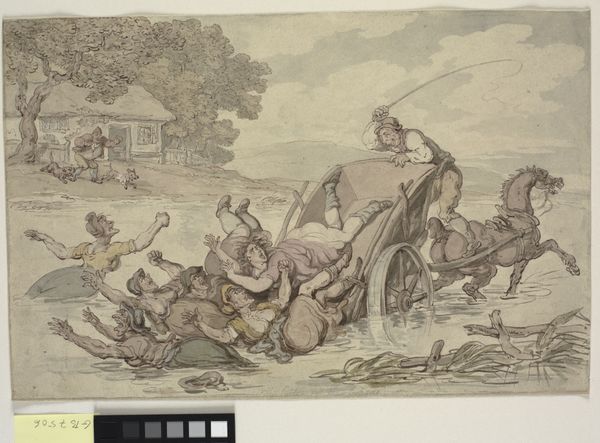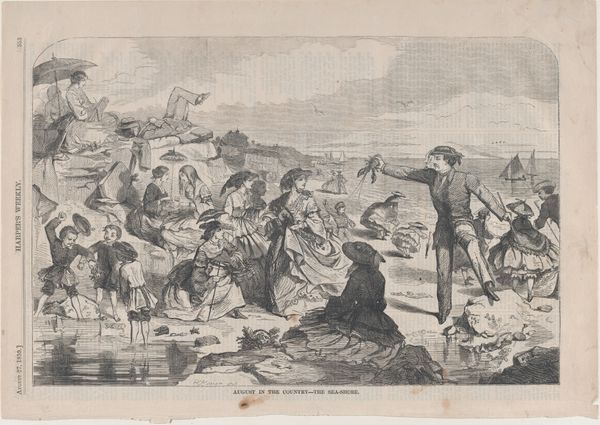
drawing, watercolor
#
drawing
#
water colours
#
landscape
#
figuration
#
watercolor
#
genre-painting
#
mixed media
Dimensions: height 292 mm, width 414 mm
Copyright: Rijks Museum: Open Domain
Curator: Alexander Ver Huell offers us this intriguing scene titled "Landscape with Duelling Men," dating circa 1854 to 1887. The artwork, a combination of watercolor and drawing, presents a flurry of action amidst a tranquil landscape. Editor: My immediate impression is one of brutal elegance. The pale, almost faded colours create an ethereal quality that contrasts sharply with the violence depicted. Curator: Precisely! Note the dynamism achieved through the strategic arrangement of the figures. The clustered duelers on the left counterpoint the lone figure scrambling up the small hill, directing the eye. There's a tangible tension in the composition; it seems on the brink of collapsing to one side. Editor: It’s interesting how this aesthetic distance shifts the impact. Were it painted in vivid oils, we'd likely perceive the duelling as barbaric, a simple expression of hypermasculine power. But the restrained palette—that faded blue-green backdrop and earthy pinks—invites contemplation of its purpose. Who are these combatants? Curator: The cultural context of duelling at this time cannot be ignored. This era witnessed changing notions of honor and aristocratic masculinity. Though formally outlawed, duels were tolerated in many circles as a way to defend one's social standing. Ver Huell provides no overt judgement; he captures a societal performance. Editor: Absolutely. Notice the way Ver Huell juxtaposes the raw physicality of the duel with its ceremonial trappings, the period costumes acting almost as performative dress, as if this grim business were but a kind of stage-acting ritual with life and death as the dire consequence. There’s such careful detailing here too in rendering fabrics, even on a wounded combatant lying prostrate in the dirt. Curator: He uses crosshatching to define depth but refrains from completing many of the forms; leaving a trace, inviting the eye to complete forms and shapes within the narrative—suggestive more than conclusive. Editor: Yes, this openness enhances that ethereal feel while suggesting a much deeper truth of what might’ve taken place here… I suppose one could also see it as quite ambivalent comment regarding violence during the shift to modernization of Europe at the time. It holds ambiguity at its core. Curator: Well considered! Overall, Ver Huell's composition challenges simple interpretations. Editor: A masterful blend of delicacy and violence, a fitting work to spark ongoing historical conversation.
Comments
No comments
Be the first to comment and join the conversation on the ultimate creative platform.
